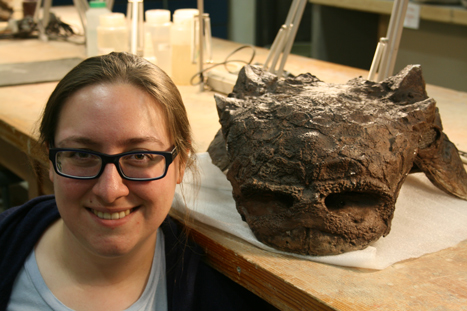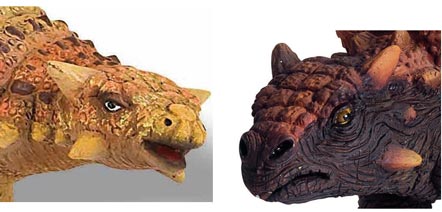A Role Model for Young People – Dr Victoria Arbour
With the changes to the England’s national curriculum for schools and the greater emphasis on scientific working, team members at Everything Dinosaur often get asked to provide information about inspirational scientists to help enthuse and motivate young people. With many schools adopting dinosaurs or the “Jurassic Forest” as a term topic and with rocks and fossils part of the curriculum at Key Stage 2, the number of requests for advice is on the increase.
The Pioneer Mary Anning
The story of Mary Anning (1799-1847), the Dorset woman of “she sells sea shells on the seashore” fame is highly appropriate. Mary’s contribution to palaeontology and geology is well-documented, as is sadly, her shabby treatment by the male dominated academia of the 19th century. For those teachers, homeschoolers and educationalists who want to inspire their pupils looking at the role of a scientist working today, then the work of Dr Victoria Arbour and her research on armoured dinosaurs is worth exploring.
Dr Victoria Arbour (Vertebrate Palaeontologist)
Picture credit: Angelica Torices
Studying Ankylosaurs
Here is a short biography of Dr Arbour, in her own words (mostly):
I’m one of those kids that never grew out of their “dinosaur phase”. I have been interested in palaeontology as far back as I can remember. I knew that I wanted to pursue palaeontology as a career, or find an interesting field of science related to palaeontology. So far, so good: I’m currently working as a postdoctoral researcher at the North Carolina Museum of Natural Sciences and North Carolina State University in Raleigh, North Carolina (United States). Prior to this, I did my MSc and PhD degrees at the University of Alberta in Edmonton, Alberta, (Canada).
My home town is Halifax, (Nova Scotia, Canada) and I studied for my BSc degree in Earth Sciences and Biology at Dalhousie University (Halifax, Nova Scotia).
Nannofossils Studied
Taking a break from her studies in the summer, Victoria spent some time identifying calcareous nannofossils (coccoliths and coccospheres et al) from the Scotian Slope, an area off the coast of the Canadian province. However, whilst at university, Victoria helped to study the first dinosaur fossils that had ever been collected in British Columbia. These were from a small plant-eating dinosaur, but unfortunately the remains were too fragmentary to figure out exactly what species it was.
Now based in North Carolina, Dr Arbour focuses on the Dinosauria and her office is situated in a very inspiring location. She continues:
Every day I walk past a Tyrannosaurus skeleton to get to my office, and my office is part of the exhibits at the museum, which means I get to see people enjoying that same Tyrannosaurus as much as I do. In the summers I head out to the field to dig up dinosaurs in places like Utah, Alberta, and even sometimes Mongolia! The rest of the time, I’m thinking about ankylosaurs, the armoured dinosaurs with lots of spikes.
Why the Ankylosauridae?
I’ve always liked ankylosaurs (well, I’ve always liked all dinosaurs!), but I became particularly interested in them when I started to think about what kind of project I wanted to do for my MSc thesis. I kept seeing pictures in books of armoured dinosaurs using their tail clubs to defend themselves from predators, and I wondered if there was a way we could figure out if they could have done that. So, some of the first projects I worked on looked at how fast and hard these dinosaurs could swing their tail into something, and what would happen to the tail when they smashed it into another object.
Teachers have no need to worry about whether or not all that can be discovered about dinosaurs will have been documented by the time their young charges are ready to choose further education options.
New Dinosaurs and Perhaps New Ankylosaurs Too
New dinosaurs are being named and described all the time. For example, in a few days, Everything Dinosaur will be writing a short article on the very latest armoured dinosaur to be described – Horshamosaurus a member of the Ankylosauria clade, but a polacanthid, an armoured dinosaur that once roamed around West Sussex (southern England).
The Ankylosauria is Turning Out to be a Very Diverse Clade
Picture credit: Everything Dinosaur
When asked why she specialises in studying the armoured dinosaurs, Victoria replied:
“The sneaky thing about science is that as you try to answer one question, you end up with more than you started with! One thing led to another, and I’ve been studying lots of different aspects of ankylosaur biology – like how many species there were, how they moved between continents, and how their tail clubs evolved – and I still have lots of questions left to answer about these cool dinosaurs.”
For further information about Everything Dinosaur’s outreach work: Email Everything Dinosaur.







